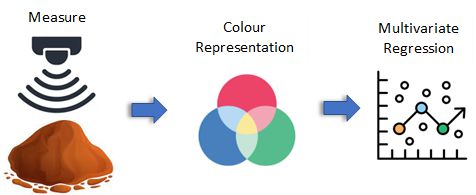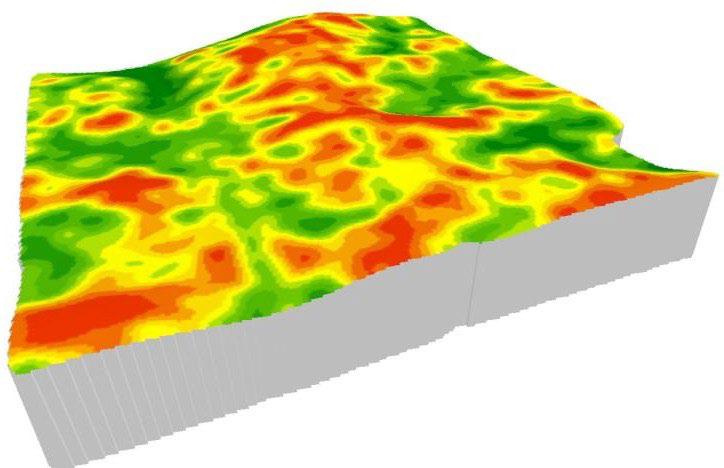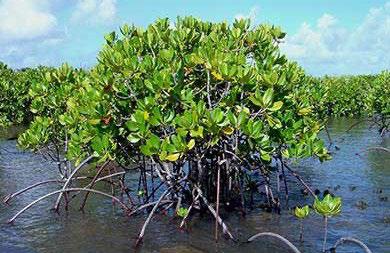Study With Us
Honours (Hons) & Masters (Msc) Projects
Measuring soil colour as a proxy for soil condition
Supervisor/s: Prof. Raphael Viscarra Rossel
Email: raphael.viscarra-rossel@curtin.edu.au
Colour is used to identify soils. It is an indicator of soil properties and processes. Soil colour depends primarily on iron oxide minerals and organic matter. Darker soil has a finer texture and more organic matter, while lighter soil has a coarser texture and less organic matter. Colour can also indicate soil redox condition; brownish-red soil is well aerated and has better drainage than greyish soil. This project aims to measure the colour of diverse topsoil samples and develop relationships between different soil colour models and carbon content.

In this project, you will learn about the significance of colour for understanding soil and the application of colour space models (RGB, HVC, CIE, etc.) in soil science. You will learn to use sensors, cameras and spectrometers for measuring soil, laboratory analysis of soil carbon, and data analysis with the R software.
Mapping soil clay mineralogy
Supervisor/s: Prof. Raphael Viscarra Rossel
Email: raphael.viscarra-rossel@curtin.edu.au
Soil mineralogy controls biochemical processes, regulates the availability of plant nutrients and influences their chemical reactions. This project aims to characterise the spatial variability of soil clay minerals at the Muresk Institute farm and map them to assess their effect on soil condition. liming.

This project represents an excellent opportunity to learn about soil pH and lime requirement
measurements, soil sampling design and precision agriculture. Skills development will include soil analysis
using electrochemical sensors, spatial data analysis and mapping with geostatistical and machine learning
methods.
Spectroscopic characterisation of blue carbon soils
Supervisor/s: Dr Lewis Walden, Prof. Raphael Viscarra Rosse
Email: lewis.walden@curtin.edu.au
Blue carbon ecosystems (BCE), including tidal marshes, mangroves, and seagrasses, are threatened ecosystems that provide critical socio-ecological services and economic resources. To improve our understanding of soils in BCEs and the processes which have contributed to their formation, we need to quantify their properties accurately. This project aims to characterise the physical and chemical soil properties of BCEs using modern analytical tools, including visible and infrared spectrometers.

This project represents an excellent opportunity to learn about blue carbon soils and soil
spectroscopy. Skills development will include the development of protocols for measuring soils with different
spectrometers and data analysis using multivariate statistics and machine learning methods.
Developing mid-infrared spectroscopy for estimating soil clay, sand and silt
Supervisor/s: Prof. Raphael Viscarra Rossel
Email: raphael.viscarra-rossel@curtin.edu.au
Measuring the sand, silt and clay content of soils is important because they affect other soil properties, such as the water holding capacity, permeability, bulk density, aggregate stability, and carbon storage. However, conventional laboratory methods for measuring sand, silt and clay are expensive and time-consuming. This project aims to develop a practical technique for using mid-infrared (MIR) spectroscopy to measure soil sand, silt, and clay contents rapidly and cost-effectively.

In this project, you will learn and develop skills in soil spectroscopy. You will measure soil samples with a Fourier-Transform Infrared spectrometer, learn to interpret soil MIR spectra, and develop spectroscopic models using multivariate methods and machine learning.
Using laser-induced breakdown spectroscopy (LIBS) for the analysis of sandy
Western Australian soils
Supervisor/s: Prof. Raphael Viscarra Rossel & Teresa Hu
Email: raphael.viscarra-rossel@curtin.edu.au
Laser-induced breakdown spectroscopy (LIBS) is a sensing technology for determining the elemental composition of soil. LIBS uses a laser to ablate the surface of the soil sample. A plasma forms, consisting of electronically excited atoms and ions. As these atoms decay back into their ground states, they emit characteristic wavelengths of light, which are measured with a spectrometer. The LIBS spectra represent “unique fingerprints” of soil elemental composition. This project aims to investigate using a new hand-held LIBS sensor to measure the elemental composition of sandy WA soils.

This project represents an excellent opportunity to learn and develop skills in modern soil sensing technologies, experimental design, laboratory analysis, LIBS sensing and methods for spectral data analysis.
Doctor of Philosophy (PhD) Projects
Postdoctoral Projects
